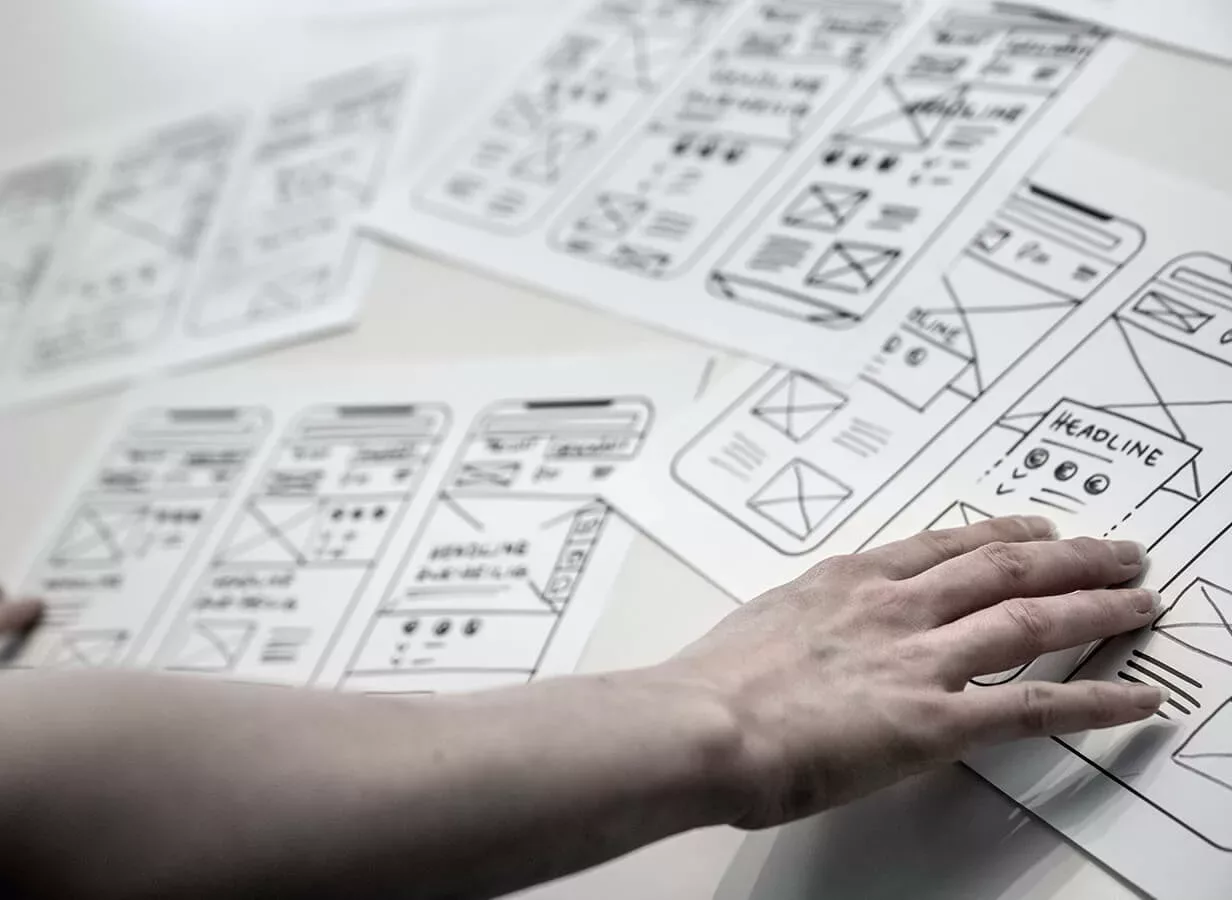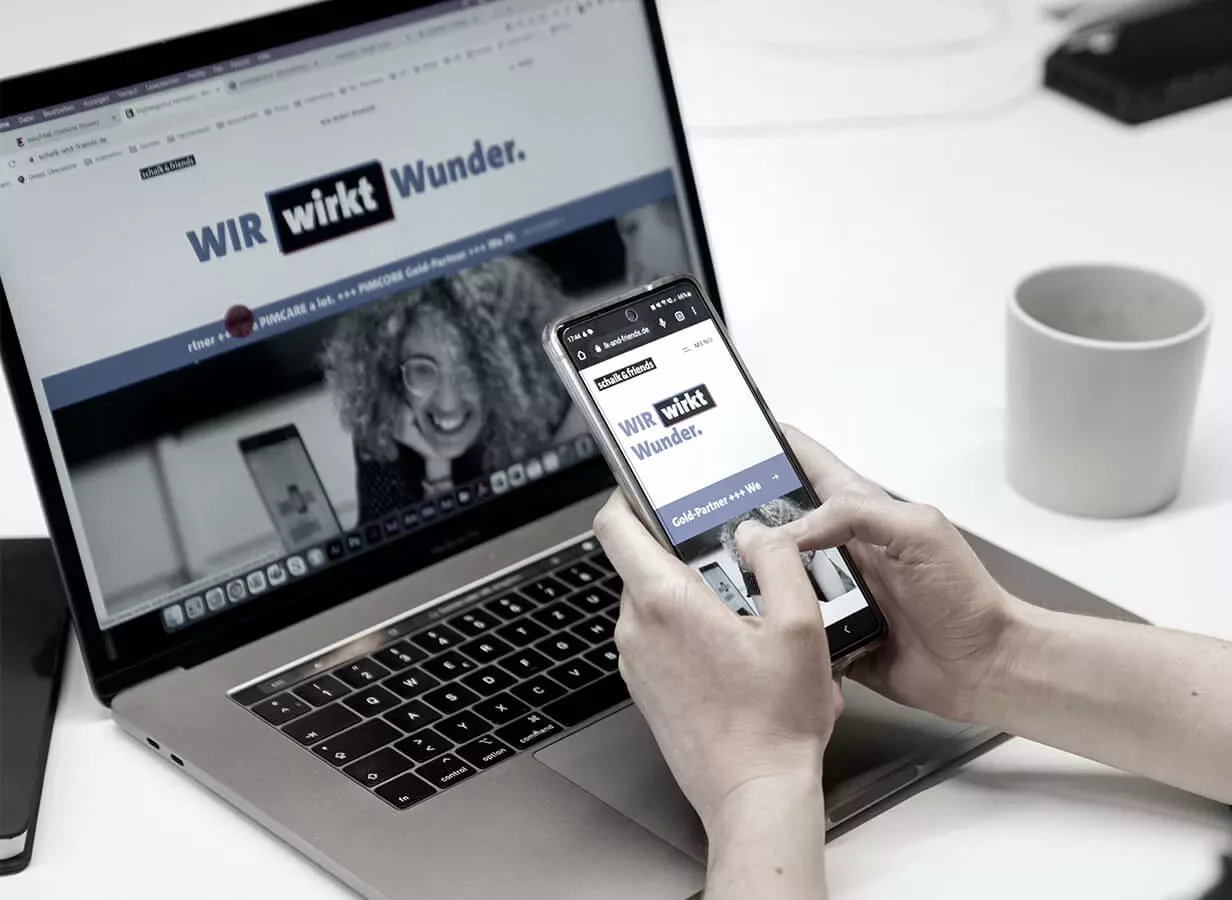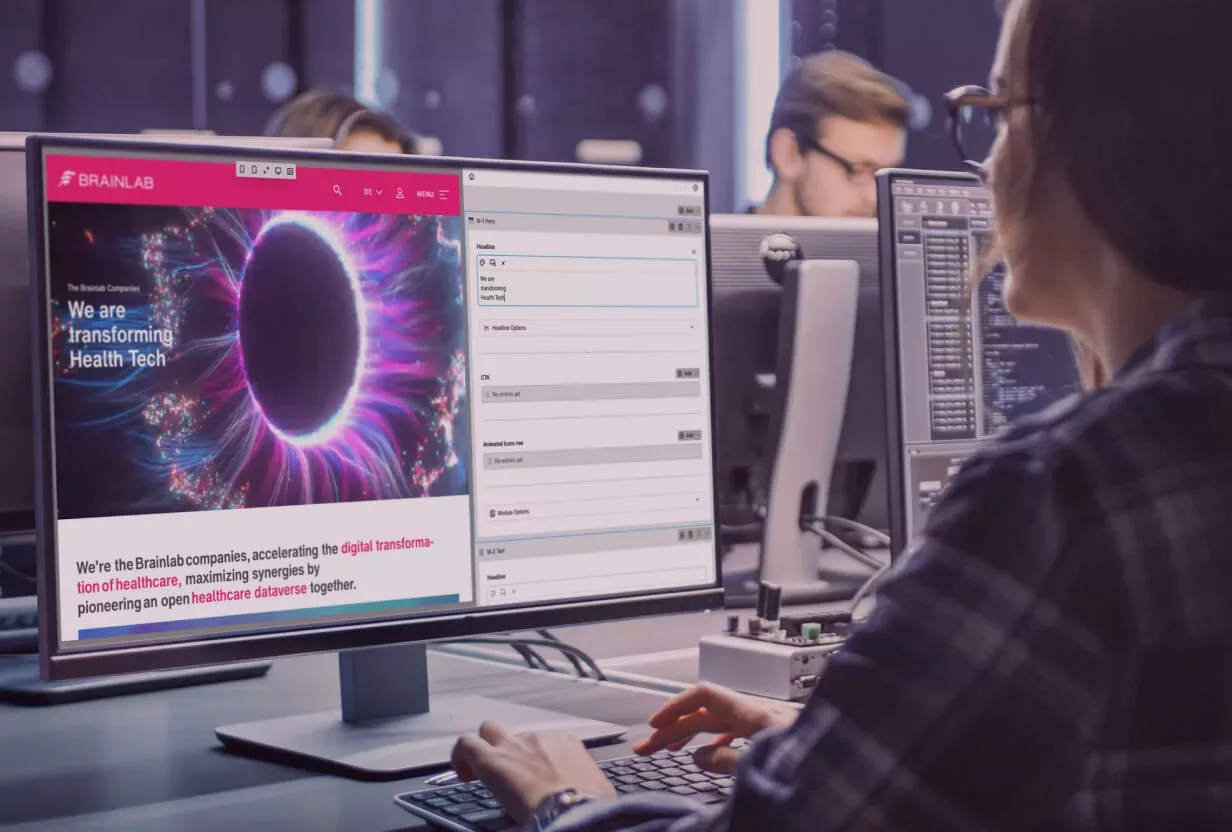Step by step to an effective company website
If you’re wondering what a website needs, you’re asking the wrong question. It should rather be: What do your visitors need? Fulfilling the needs of your target groups is the imperative of any web development.
Mehr erfahren zu Step 01
UX/UI Design
We develop a user journey that defines the content concept of your company website and ensures intuitive user guidance. The first wireframes with relevant content and functions are already created here. On this basis, we create an attractive corporate website design that matches your brand and positioning.
Mehr erfahren zu Step 02
SEO & Content
Provide content that not only interests search engines, but also your target group. From website design to illustration and text, we work out what makes your content relevant. And we always have your target groups and corporate SEO in mind.
Mehr erfahren zu Step 03
Coding
In close cooperation with the design department, the development department implements your finished corporate website. In this phase, we place particular emphasis on regular quality checks to ensure a technically flawless and visually convincing result.
Mehr erfahren zu Step 04
Support & Maintenance
No maintenance is not an option. Because the digital market is constantly changing, a website is often out of date faster than you can say support. We focus on long-term cooperation and ensure that the content and technology of your website are always up to date.
Any questions?
You can find even more information on website development here in our FAQs. That wasn't enough? Then we look forward to talking to you in person!
UX stands for “user experience”. It encompasses the overall experience of users when interacting with a website or application. The main focus here is on how user-friendly, functional, helpful and accessible a product is for the target group.
UI, on the other hand, stands for “user interface” and refers to the visual presentation of digital products. In addition to style and design guides, this also includes visual elements such as icons or buttons that contribute to an intuitive, appealing user interface.
So while UI defines what users see when they interact with a website or app, UX deals with the question of how users feel. Both areas go hand in hand and contribute to higher target group satisfaction, more engagement and a higher conversion rate.
“Accessible” websites make digital offerings accessible to all people. Regardless of technical, visual, hearing, movement or information processing limitations – regardless of whether these are permanent or temporary. An accessible website not only supports people with disabilities, it also improves the usability and accessibility of the website for all other users.
However, accessibility is not only relevant for around 1 billion people with disabilities (who make up around 15% of the total population!). It can really affect everyone – for example, if you access a website on your smartphone in bright sunlight or cannot use the mouse properly due to a finger or hand injury. High contrasts and spacing between interaction elements make it easier to use.
Until now, only public authorities or state-funded website operators have been obliged to provide accessibility in Germany. However, with the introduction of the Accessibility Reinforcement Act (BFSG) on 28 June 2025, this will also apply to the majority of private economic operators. Online shops are particularly affected by this. However, laws on equal treatment and against discrimination of disabled people also exist internationally – in the USA, these are even enshrined in the Civil Rights Act. Accessibility may therefore already be mandatory for internationally operating companies.
In addition, many technological measures for accessibility offer the opportunity to improve SEO and thus the ranking of the website at the same time.
Accessible web development is implemented in accordance with international standards that provide clear guidance and best practices for developers. We have our own in-house specialists to ensure that your corporate website fulfils accessibility guidelines.
“Responsive design” means that a corporate website is designed and developed in such a way that the design automatically adapts to different screen sizes and devices. The aim is to ensure consistent quality and an optimal user experience on all end devices – whether desktop computers, laptops, tablets or smartphones.
With responsive design, the website reacts dynamically to the characteristics of the respective end device of your target group. The layout, structure and content of the website adapt flexibly to the available screen size, resolution and orientation. This makes it easy to read and user-friendly on any device. There is no need to create separate company websites for different devices. In addition, responsive design has a positive effect on the accessibility and search engine ranking of your website.
Every company is different: when choosing the right technology, it is therefore worth looking left and right. We offer various systems such as WordPress, Elementor, Kirby, Pimcore or Storybook, which we carefully select and customise based on your requirements and wishes. A sustainable platform enables a future-proof user experience with which you are optimally equipped for all new developments and challenges. Let’s work together to find the solution that perfectly matches your goals, your resources and your company.
Your data centre is in Munich and in the German cloud. We offer a high-availability server, 24/7 support, as well as scanning and error tracking tools such as Pingdom or Sentry. In concrete terms, this means: schalk&friends focuses on security and stability! Continuous availability prevents loss of sales, downtime can be responded to quickly and the damage to paid media campaigns whose conversion functions lead to a non-existent page can be minimised. This is accompanied by another, secondary advantage: the avoidance of loss of ranking in search engine optimisation (SEO).
Our team offers ideal solutions for anyone who values personal contacts and direct support – and wants to utilise all the tricks of modern technology.
As an agency, we offer customised and flexible maintenance packages for your corporate website. Maintenance projects are carried out for fixed blocks of time each month and at a discounted hourly rate. Your dedicated contact partners not only take care of all resources, services and trades, they also continuously maintain your software with security updates and new patch releases. We are also happy to advise you on all digital topics that will make your company website even better.
Tracking allows you to collect valuable data about the behaviour of your customers and website users. For example, you can find out which pages are visited most frequently, how long users stay on your website and what actions they take. Regular user testing provides information about which messages and display variants work best on your website. These findings enable you to continuously and specifically optimise your website or offer. In this way, you not only improve the user experience, but also the conversion rate to achieve your business goals
In addition, you can use data and tracking to target your marketing strategies more precisely. Data helps you to find out which marketing channels deliver the best results or which messages and offers are most effective. This allows you to target your resources and adapt your marketing campaigns in a data-driven way to achieve better results and maximise your return on investment.
In all of this, it is important to ensure that data is handled responsibly. Compliance with applicable data protection laws and transparent communication are crucial to maintaining your customers’ trust and ensuring that their privacy is protected.






